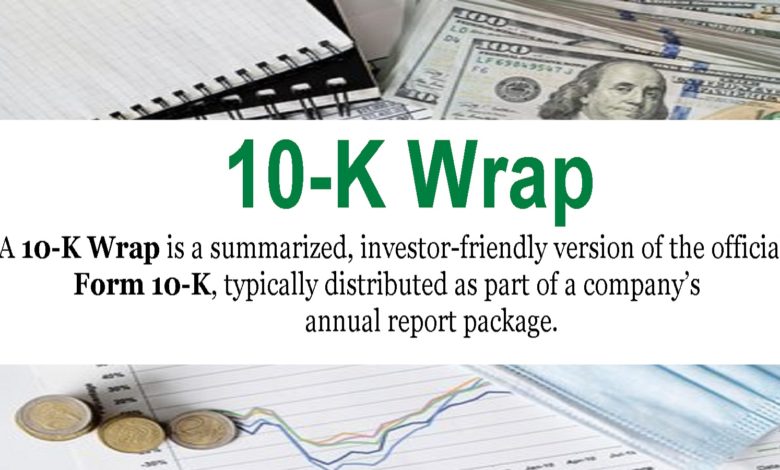10-k Wrap: Definitions, Advantages, and Limitations

A 10-K Wrap is a summarized, investor-friendly version of the official Form 10-K, typically distributed as part of a company’s annual report package. Unlike the legally required Form 10-K filed with the SEC, the 10-K Wrap is a more visually appealing document designed for shareholders, combining essential financial data with graphics, charts, and company highlights. It’s a way to “wrap” the technical financial report with additional information that appeals to investors.
Understanding a 10-K Wrap
While the Form 10-K is comprehensive and detailed, the 10-K Wrap condenses this information into a more digestible format. It includes financial summaries, performance highlights, and forward-looking statements, often in a glossy, easy-to-read layout. The goal is to keep shareholders engaged by presenting key financial data alongside company news and strategic initiatives.
Why Companies Use a 10-K Wrap
Companies use the 10-K Wrap to provide their investors with a simplified version of the official financial data while still complying with SEC regulations. It’s a way to showcase their accomplishments, present future goals, and enhance their image with branding elements like graphics, photos, and charts. This document bridges the gap between technical financial data and a company’s broader corporate narrative.
Contents of a 10-K Wrap
A 10-K Wrap often includes:
- Executive Summary – A high-level overview of the company’s performance.
- Key Financial Metrics – Summarized balance sheet, income statement, and cash flow data.
- CEO’s Letter – A message from the company’s CEO, reflecting on the year and discussing future goals.
- Performance Highlights – Milestones, revenue growth, or other significant achievements.
- Visuals – Charts, graphs, and images that help illustrate financial performance and business developments.
10-K Wrap vs. Form 10-K
While both documents cover the company’s financial performance, they serve different purposes:
- Form 10-K is a mandatory SEC filing that is comprehensive and highly detailed, focusing on legal and regulatory compliance.
- 10-K Wrap is a voluntary document aimed at investors and shareholders, offering a more engaging, readable summary of the Form 10-K.
Advantages of a 10-K Wrap
- Investor Engagement – The 10-K Wrap is visually appealing, making it easier for investors to grasp essential financial information.
- Branding Opportunity – Companies can align the design with their brand identity, including photos and graphics.
- Highlights Key Information – Investors get a quick look at financial performance without having to dig through the more complex Form 10-K.
Limitations of a 10-K Wrap
While useful, the 10-K Wrap has limitations:
- Lacks Full Detail – The 10-K Wrap provides a summary but omits the depth and comprehensive analysis found in the full Form 10-K.
- Not a Legal Filing – Unlike the Form 10-K, the 10-K Wrap is not filed with the SEC, so it’s more of an informational supplement.
10-K Wrap vs. Annual Report
A 10-K Wrap and an annual report are similar but not the same:
- Annual Report: Often includes both financial data and narratives about company strategy, corporate governance, and CSR (Corporate Social Responsibility) initiatives. It is more focused on marketing the company’s achievements.
- 10-K Wrap: Primarily focuses on summarizing the technical financial information found in Form 10-K, while still making it investor-friendly.
FAQs
1. Is a 10-K Wrap required by the SEC?
No, it’s an optional document created for investors and shareholders.
2. Can I find the 10-K Wrap on the SEC’s EDGAR database?
No, the 10-K Wrap is not filed with the SEC. It is distributed directly to shareholders.
3. How is the 10-K Wrap different from Form 10-K?
The 10-K Wrap is a summarized, visual version aimed at simplifying the more detailed Form 10-K.
The Bottom Line
The 10-K Wrap provides a condensed, visually engaging version of the full Form 10-K, allowing companies to share key financial insights in a shareholder-friendly way. While not a replacement for the legally mandated Form 10-K, it helps keep investors informed while reinforcing the company’s brand and achievements.